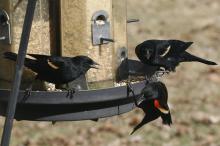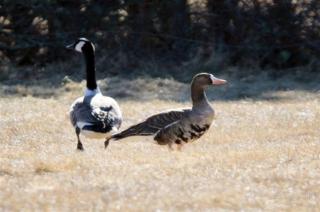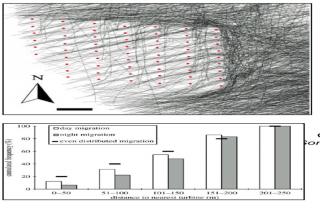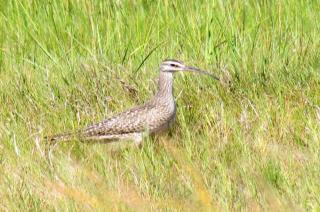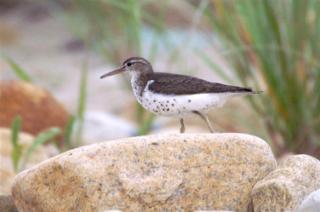Birds
2011
On Feb. 19, Flip and I were in the Florida Everglades with our old birding friend, Paul Bithorn from Tropical Audubon, coleading a birding trip for Audubon of Martin County. We were leaving the Anhinga Trail where we had seen both dark and light morph short-tailed hawks and purple gallinules when I received a call on the cell phone. It was Edo Potter. She was very excited and proceeded to tell me that her sister, Ruth Welch, had alerted her and Bob that there were four greater white-fronted geese in the pond behind her Chappaquiddick house.
2010
Beetlebung Corner is really the center of Chilmark. The library, the school, the community center, the town hall, two banks, a restaurant, a general store, a real estate office and the post office are all within a few steps. This is all well and good for humans. However, for the birds Beetlebung Farm, which provides fresh vegetables and flowers in the summer, is their main attraction. By now the vegetables have been harvested and most of the flowers gone. Luckily there are still a few hardy nasturtiums blooming and a very late visitor arrived on Nov. 2 to enjoy the nectar of these nasturtiums. Marie Scott and Suzie Bunker, both daughters of Ozzie and Rena Fischer, spotted the hummingbird and alerted their father and their brother, Bert.
Wind farms have long provoked a certain cognitive dissonance among environmentalists, who favor renewable energy but oppose the negative impacts of turbines, including bird strikes and habitat displacement. The effects of turbines on bird populations are fairly well understood after a decade of European experience but less is known about their impact underwater, especially on local species of whales and sea turtles.
Hurricane Earl was a bust for bird watchers. A cast of thousands, all the Vineyard’s most active bird watchers, met at the Gay Head Cliffs on Saturday, Sept. 4 with high hopes. Although the winds were not much more than a northeaster, we were hopeful that some unusual bird species may have been carried to our Island from afar. No such luck. There were more bird watchers than birds.
Summer visitors are beginning to arrive. I have a few reminders for them and for locals as well. It is important to keep your cats inside. There are several bird species that nest on or very close to the ground on the Island. Ground nests containing young birds are very vulnerable to cat predation. Adults are fair game for cats as well. You say you feed your cat well and therefore they don’t hunt. Not so! Cats have a hunting instinct and no matter how full they are, they will hunt birds. And the bell you put around the cat’s neck does not effectively warn birds of cat strikes. A bit of information from the American Bird Conservancy: “Indoor cats live an average of three to seven times longer than those that are outdoors.”
2009
Bird watching or birding, you may call it what you wish, is great hobby, occupation, form of relaxation, and more than anything else is an ongoing education. The learning experience involved in birding is one that has kept me hooked on watching, reading about, talking to others about, and surfing the net for information about birds for lo these many years.
